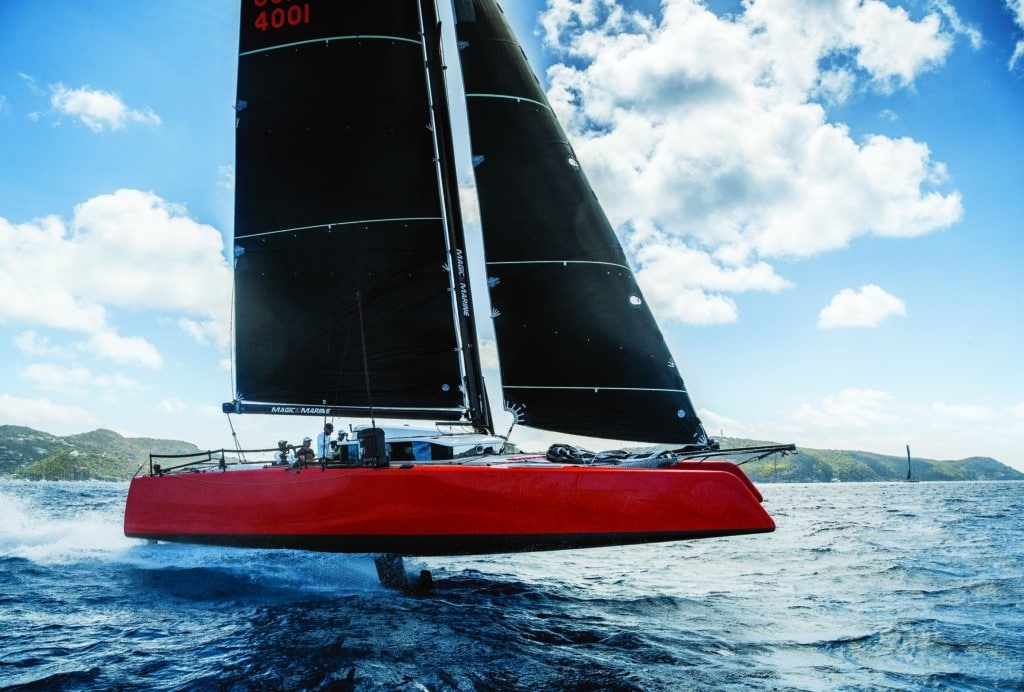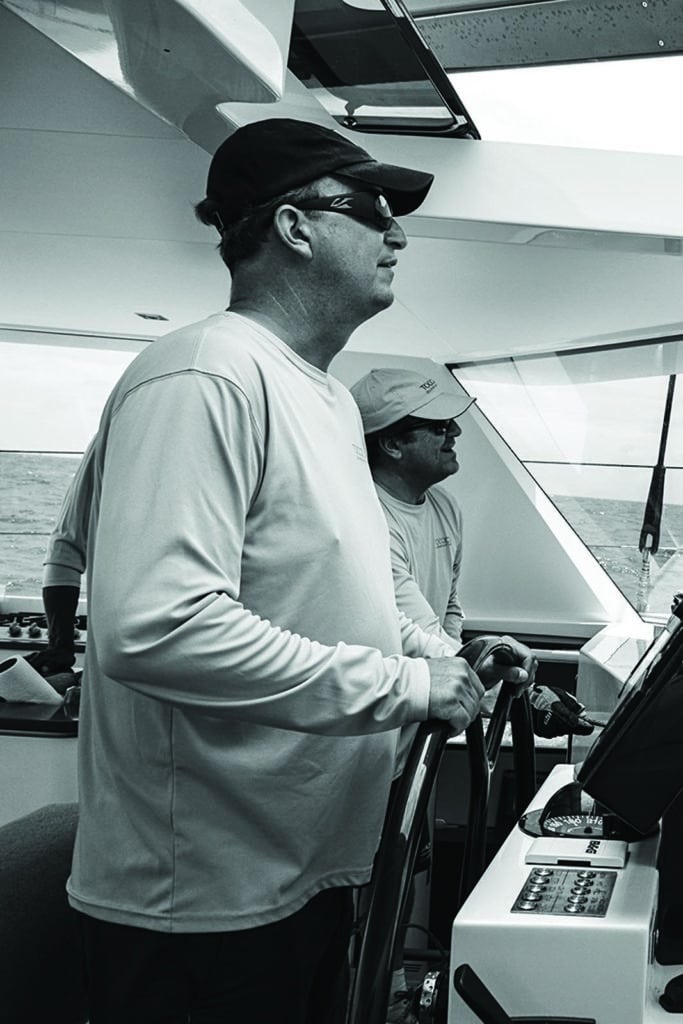
Les Voiles de Saint Barths 2015
Since launching its first boat in 2001, performance-cruising catamaran builder Gunboat has moved its production twice and now come halfway around the world to arrive home in the USA, in Wanchese, North Carolina. Every in-between settlement made sense, but not as much as this one.
Cape Town, South Africa, hosted the first Gunboat factory. Company founder Peter Johnstone recalls the start-up process as being “years of grinding out boats in low volume, selling by word of mouth, in disbelief that this was really happening.” Strictly regulated labor hamstrung the company whenever markets changed. “South Africa was not the place to be, long-term, in the boat business,” Peter says. “We got walloped in the recession. It was time to get out.”
“In 2010, China looked promising,” Peter continues. “I had to try it, so we did the 60 series (in Gunboat terminology, “series” refers to a model size) there, but it was a nightmare. The Chinese supply chain is six to eight months — meaning a change order adds six to eight months — and these are complex boats. Shipping clearances can take 60 days. And a signed contract is merely a green light for nickel-and-diming. We were coming to the 55 series. I didn’t have a good feeling. I started looking around the U.S.”
Six months of bait-and-switch over the search for potential New England locations is a story for a long conversation, some other time. A sit-down in the Sunshine State with a former business partner reminded Peter that he already knew better than to go to Florida, but the kicker was this bit of advice: “I just spent 10 days on the coast of North Carolina. Peter, it’s perfect for you. Send a note to their people in economic development.”
Peter recalls that fateful day: “I sent an email on the way to the airport. By the time I landed I had a summary of three suggested locations with labor-market descriptions, skill sets, average wages, leasing rates and the facilities available. I was back on a plane the next day.”
Wilmington was eliminated easily because the buildings weren’t suitable, and the work force was all about chopper-gunning powerboats. Beaufort was perfect except for being expensive — and there was a bridge between the site and open water. “We would have been stepping masts a mile or two away.”

Then came Wanchese. The environs of this small town on Roanoke Island had gone, in the recession, from 26 custom sportfisher builders to five, leaving deep ranks of unemployed skilled workers and, ripe for the plucking, two bank-owned facilities that were ideal. “That was the icing on the cake,” Peter says.
“I put everything I’d made in 25 years back on the table,” Peter says. “It was daunting. I had one boat under contract. I bought a 36,000-square-foot hall and thought maybe we’d partition it for sportfisher servicing or fitting out. Instead, I’ve since bought the building next door and leased two more.” That is to say, business is booming. “I’ve been amazed, and I’m grateful that coming home to the USA has been so well received,” Peter says. “It’s brought the American customer out of the woodwork — and we’re in the one market that is really healthy right now.”
Peter will allow that it took time for his skilled builders of custom sportfishers to understand just what this performance-catamaran thing is all about, but production now is moving, he says, “more toward a mind-set of workstations, quick movements, and patterns, instead of slow fit and slow finish.”
In the coming year Gunboat intends to expand the line to include a 65, a 72 and a 77. And it all grew from one man wanting one boat that nobody else could envision. That man would be Peter, and that 62-foot cat would be Tribe, Gunboat hull number one. It turned out to be quite a yacht. Peter built it to go cruising with his family, and it wound up launching a company.
— Kimball Livingston








